How To Cure Salmon Roe For Sturgeon
Curing Salmon Eggs For River Fishing
If you want to fish our rivers, you need to get your egg curing program dialed in! Cured salmon eggs are effective baits used to catch Salmon, Steelhead and Trout.
You might be heaving a fist sized ball of eggs for Chinook Salmon in the tidewater, stalking Trout in the high mountains with a single egg on an ultralight rod, or using one of many Winter Steelhead fishing techniques that are perfect for cured roe. There is no doubt in my mind that home cured salmon eggs are a great bait here in Pacific Northwest rivers.
There has always been a little mystery as of how to cure the best salmon eggs, but here you will learn the fundamental steps in the curing process.
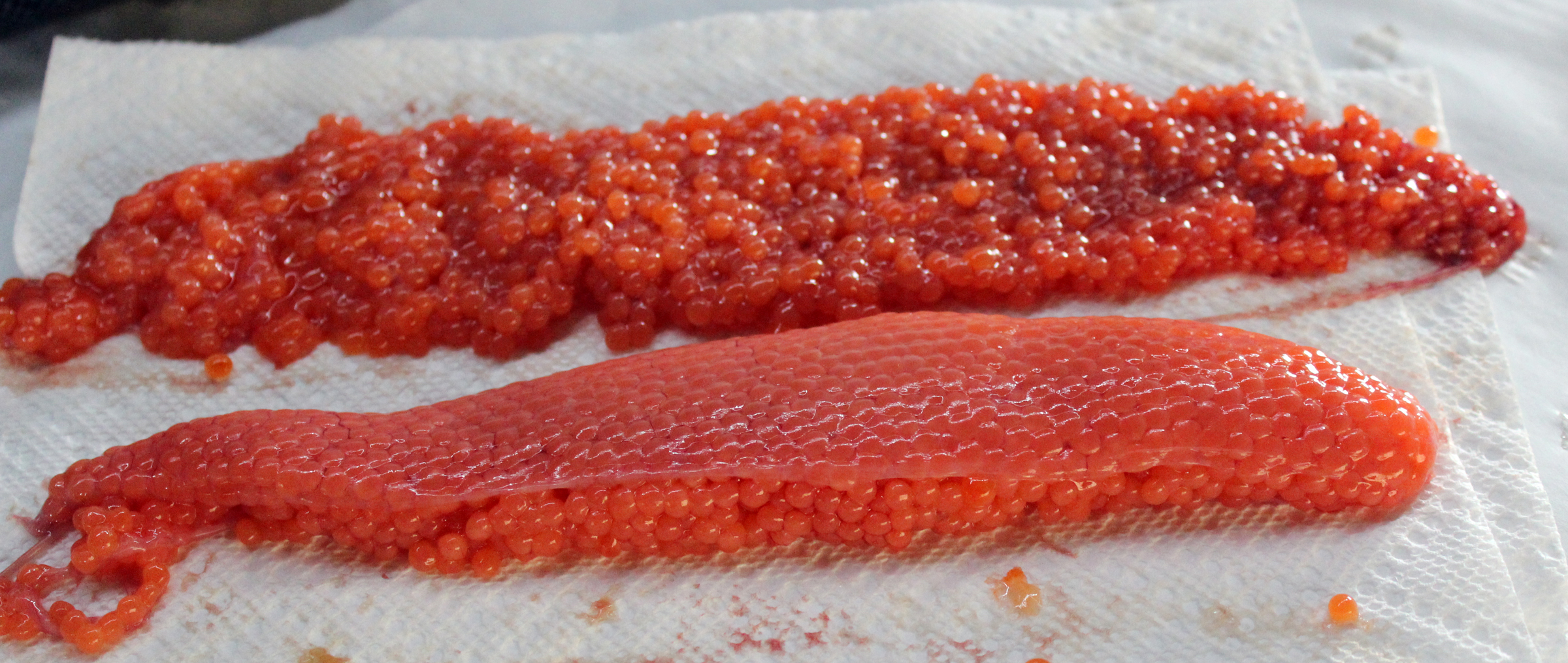
All about Salmon Eggs
Female salmon develop their eggs in a skin sack called a skein. It's almost like a purse. Plump salmon berries enclosed in a thin layer of skin. It is the skin, or skein that holds the eggs together and allows us to bait a hook and offer up an juicy presentation for salmon and steelhead fishing. As the salmon reaches their final months prior to spawning the skein will enlarge and the individual eggs will grow to about the size of a pea. Each skein can hold thousands of eggs.
As the skeins develop the eggs become tightly clustered in a skin purse that is the skein, this makes for great fishing bait that can be cut into the perfect sized chunks. Salmon that are near their spawning area will have their skeins break down and loosen, at this point the female will deposit the individual eggs in the spawning redd to be fertilized by the male salmon.
What Do I Need To Cure Salmon Eggs?
- Salmon eggs from a freshly caught fish
- One Gallon Ziplock Bag
- Egg Cure: Zilla Baits, Pautzke, Cure-All, Pro-Cure, Beau Mac Cure
- Knife or Scissors
- Paper Towels
Curing Salmon Eggs: Quick Steps
- Care for your catch: bleed the salmon and keep it cool.
- Remove egg skeins from salmon.
- Butterfly egg skeins to allow for best penetration of cure.
- Place salmon egg skeins in a bag.
- Shake on cure: not too little, not too much… just right!
- Gently shake or rotate the bag to evenly coat cure on eggs.
- Let them rest, eggs will juice out, then slowly reabsorb.
- Drain excess juice and place in fridge for a day.
- Keep in fridge if you plan on fishing within a week, or freeze for later use.
Loose Salmon Eggs and Fishing Spawn Sacs
Loose eggs can be cured but need to be clustered in a cheesecloth. These take quite a bit of time to create clusters by wrapping loose eggs the cheese cloth, but last for multiple casts and are very effective, if you don't mind doing the work.
The skein size varies based on the size of the salmon and just how close that fish is to spawning. A skein from a small Pink Salmon may weigh only a few ounces but a skein from a trophy female King Salmon might weigh a few pounds.
Salmon eggs are very delicate and are a treasure to every river fisherman.
Be sure to bleed your catch right away, keep it cool until it's time to process, and begin curing the salmon roe within 24 hours.
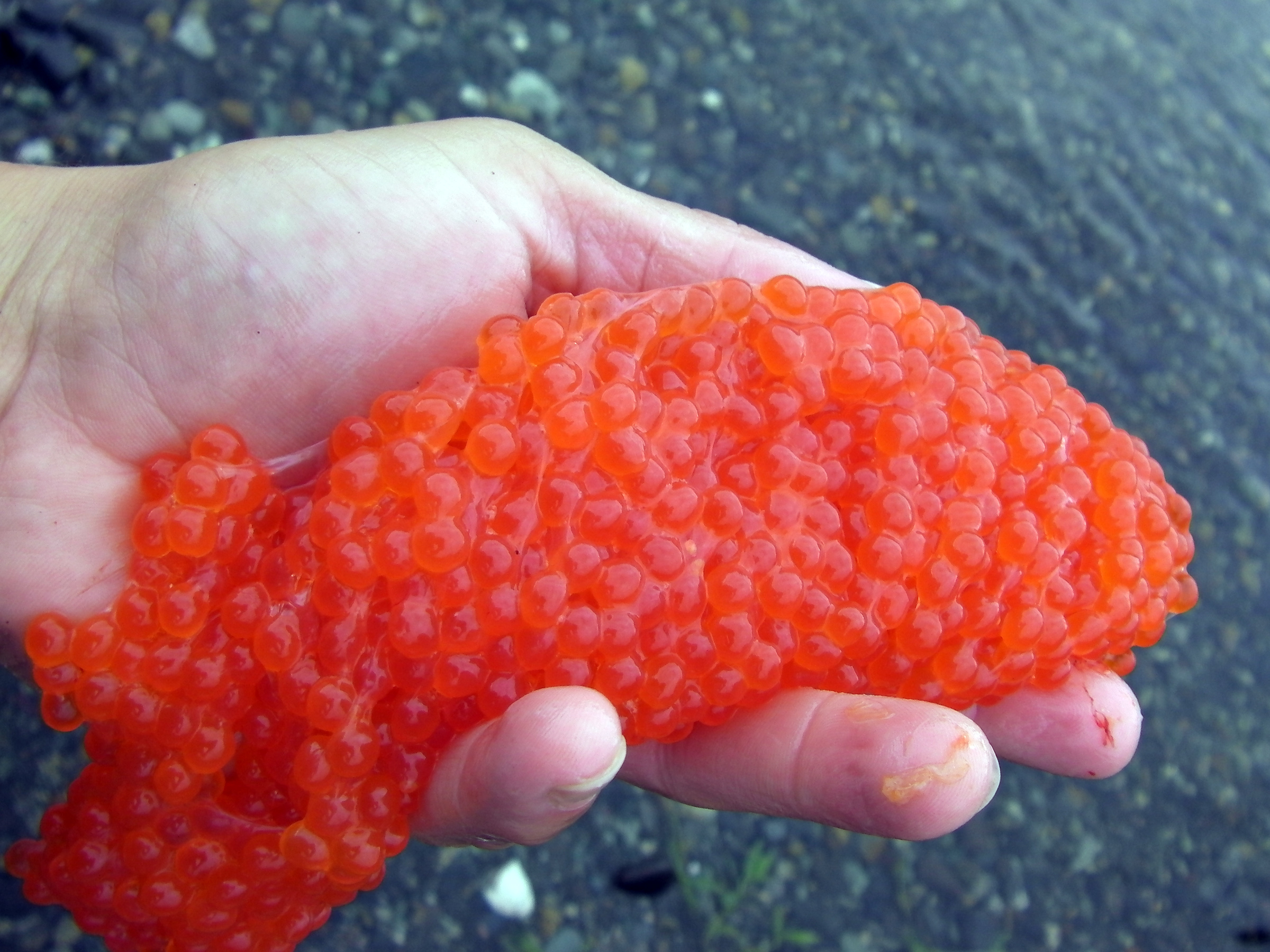
What to do after landing a Salmon
The work begins just moments after landing a female salmon. To produce great bait, you must begin with quality ingredients. Make sure to bleed the fish immediately after landing it; salmon eggs must be as blood free as possible to put up good bait. Placing the fish on ice will ensure that the meat and the roe are preserved, but on a crisp autumn day that may not be completely necessary.
Removing the Salmon Roe
Carefully cut open the underside of the salmon to remove the roe. Start the cut at the anal vent and slice up the belly to the throat of the salmon. Be sure to make the cut shallow so you don't cut through the egg skeins.
Each female salmon has two egg skeins. They are attached to the organs near the head and can be removed by hand.
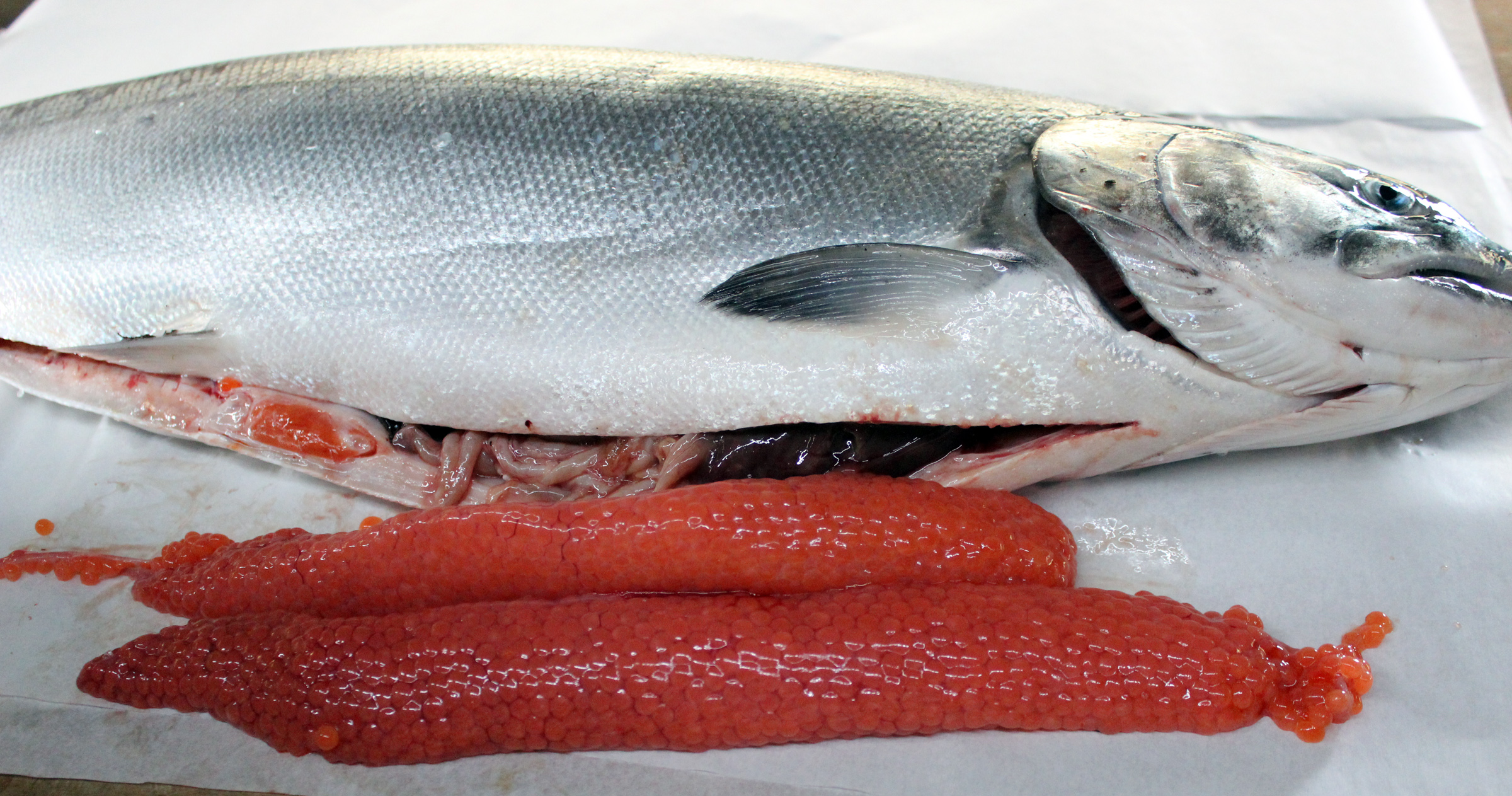
Prepare the Roe for the Curing Process
First, blood free salmon eggs create the perfect bait. Even a well-bled fish will still retain a little blood, which courses through the veins in the skein and can spoil a perfectly good batch of eggs. Take a fillet knife and puncture any blood veins on the outside of the skein, run your knife blade from the end of the vein to the opening and remove as much blood as possible.
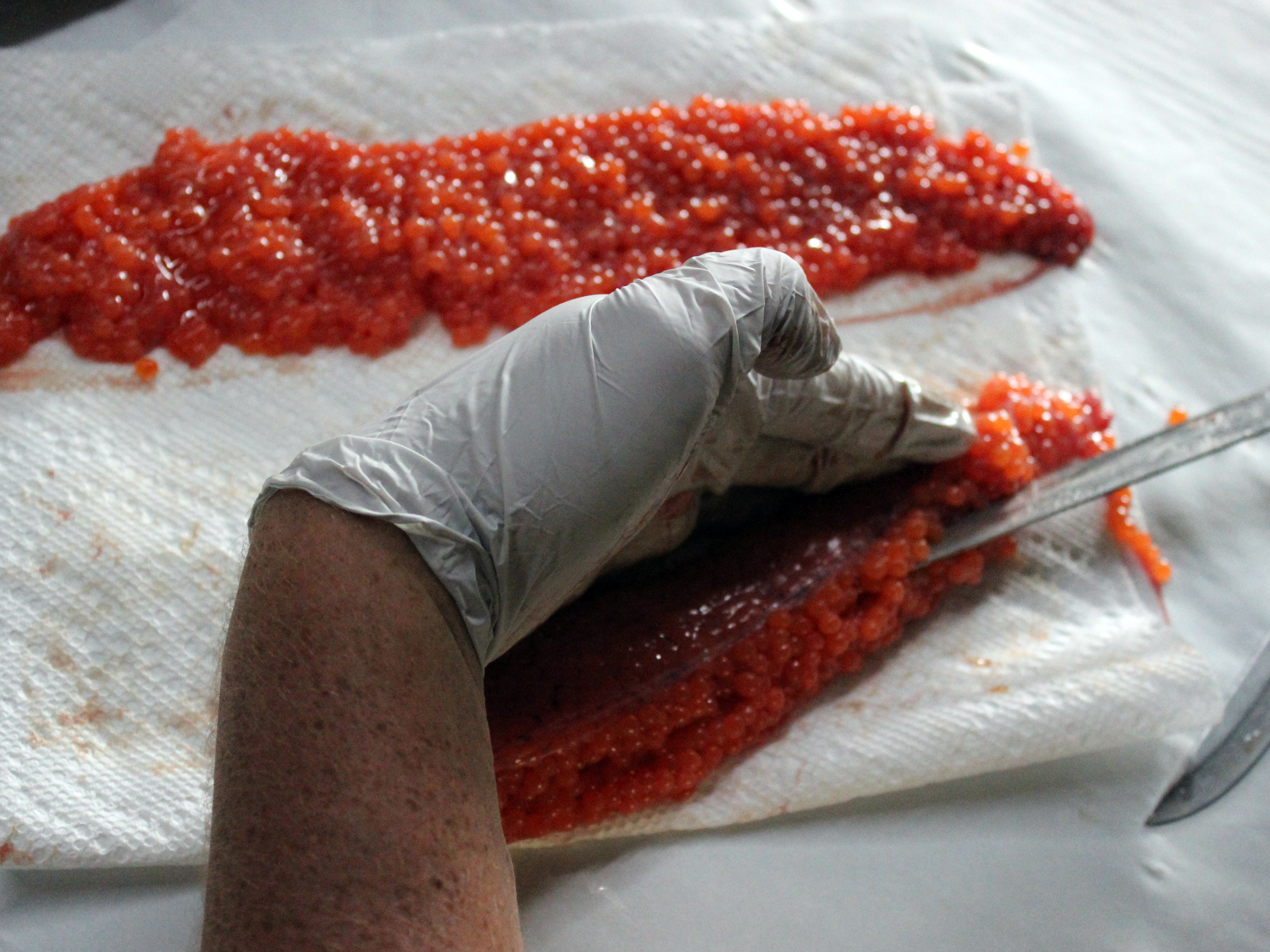
Then butterfly the skein so that all the eggs will be exposed to the cure. I like to pat dry the recently opened skeins with a paper towel to remove any lingering blood or liquid.
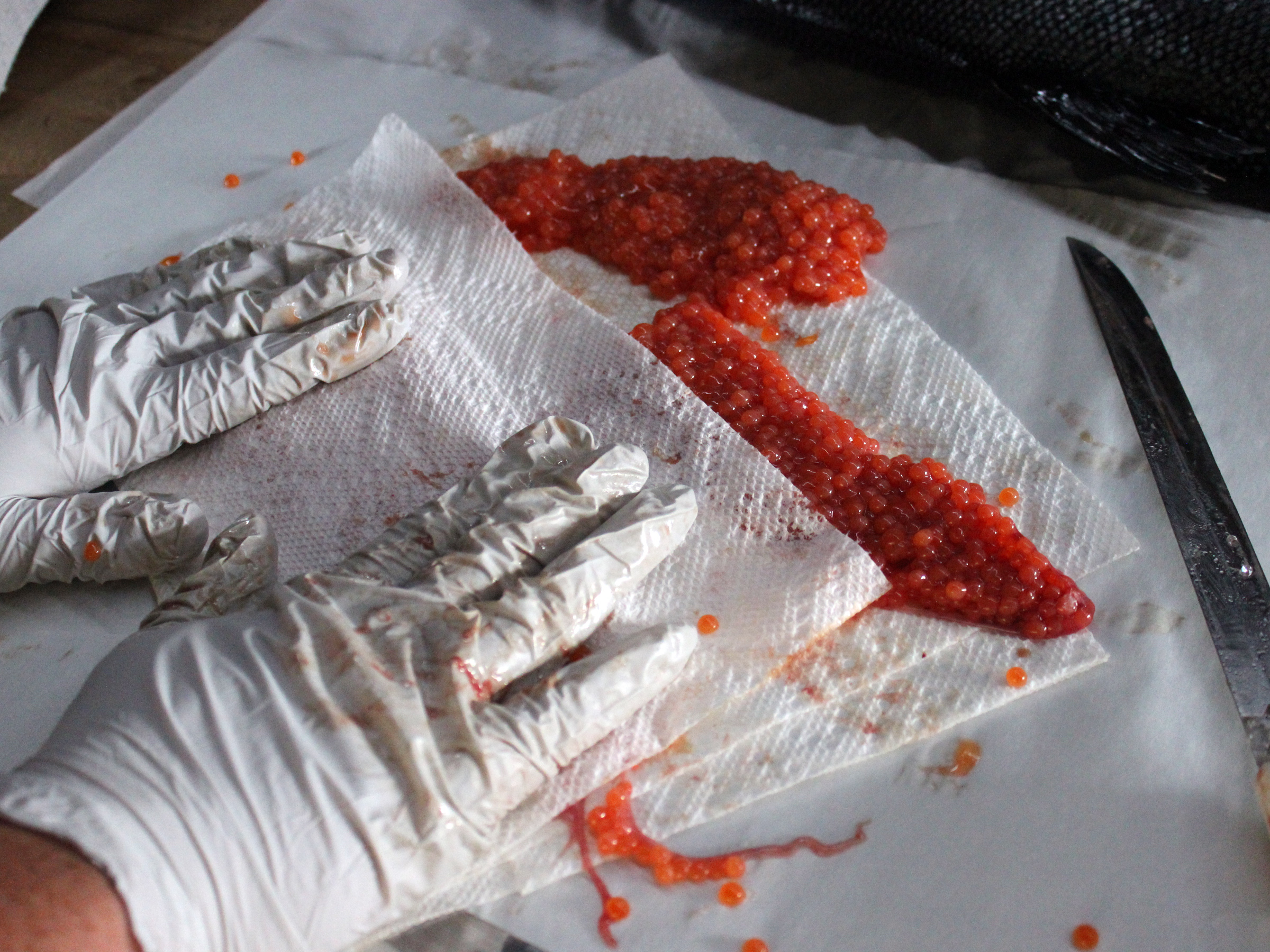
How to apply Salmon Egg Cure
Bait Cure performs several functions. It preserves the fragile roe and makes the roe more durable. It colors the roe and adds bite enhancing chemicals to help create even more tempting bait. Bait Cure can be messy as the dyes used are often potent. I strongly recommend curing any bait outside in an area where a few permanent pink stains won't cause a problem. Place the prepared skeins in either a small plastic bucket or a gallon plastic bag.
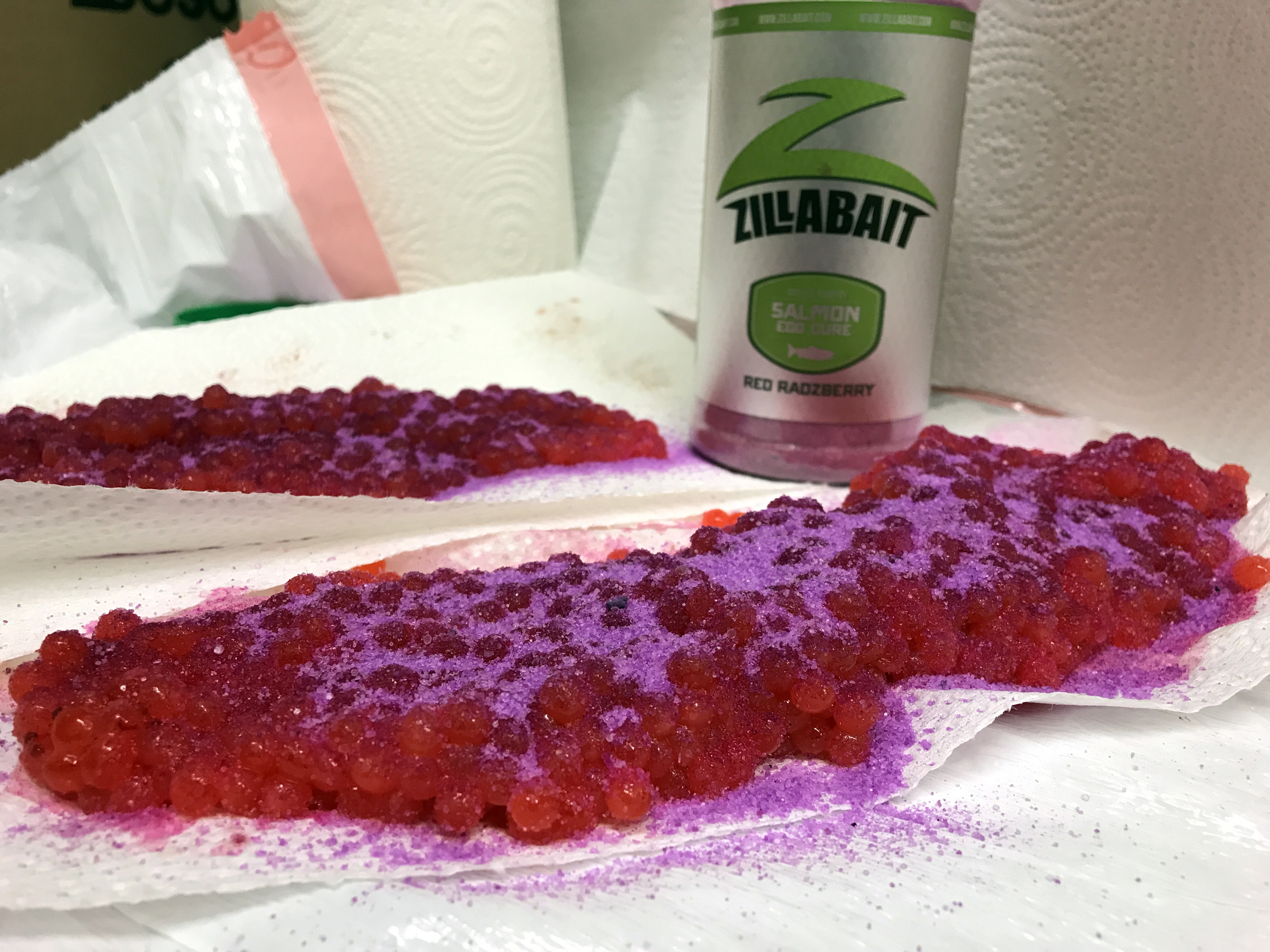
Sprinkle the cure over the skeins until they are lightly covered. I like to add a little, lightly massage the cure into the skeins, and add a little more if needed. Sometimes I will drop the eggs and cure into a bag and roll it, if I am feeling lazy. An insufficient amount of cure will produce unpreserved bait. Adding too much cure will cause the roe to be burned by the chemicals in the mixture. Once the skeins are evenly coated in cure they then need time to complete the curing process.
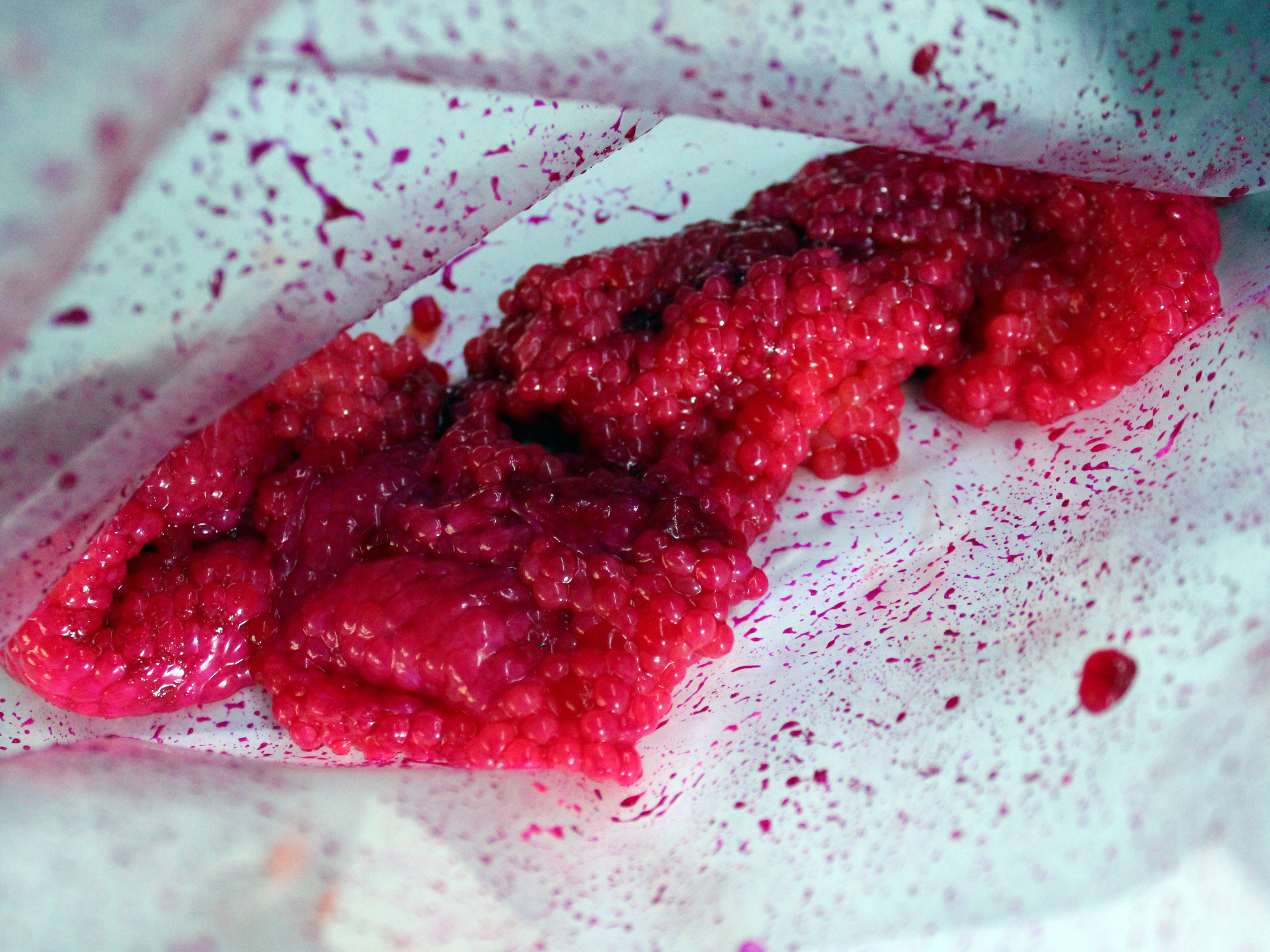
Egg Curing Process
Salmon Egg Cure is a mix of borax, salt, sugar, dye and other preservatives. The salt preserves. The sugar toughens. The borax dries. The dye colors. Once the skeins are coated, the cure will draw out liquids from the eggs. Within a few hours the eggs will shrink and the container will be filled with a soupy colored juice. Within a few more hours the liquid will be pulled back into the eggs: preservatives, dye and all. Once the juicing and reabsorbing takes place, the eggs can be specifically prepared for the desired fishing technique.
Final steps in curing Salmon Roe
Cured Salmon Roe is extremely versatile. Anglers have many ways of using it to catch Salmon and Steelhead. After the curing process is completed, you need to decide how you want to put it up. If an angler wishes to fish for Chinook Salmon, he might want a very wet egg that leaches out juices into the water; he will sacrifice durability for a bait that carries a large scent trail. If an angler wishes to fish for Steelhead, he might decide that it is more important to have a durable bait that can handle a dozen casts before it falls apart.
When putting up Wet Cure Eggs, consider taking the entire finished product and simply place it in a glass quart Mason Jar to freeze. Juice and all.
When putting up Salmon Eggs for Steelhead fishing, strain the eggs in a colander. Then air dry them on a rack to toughen them up. If you want really durable eggs, roll them in borax.
Salmon Egg Bait Cure Suggestions
- Beau Mac Pro Glo Egg Cure – View on the Riptidefish Online Store
- Pro Cure Bait Cure – View at Sportsman's
- Pautzke Fire Cure – View at Sportsman's
- Pro Cure Liquid Egg Cure – View at Sportsman's
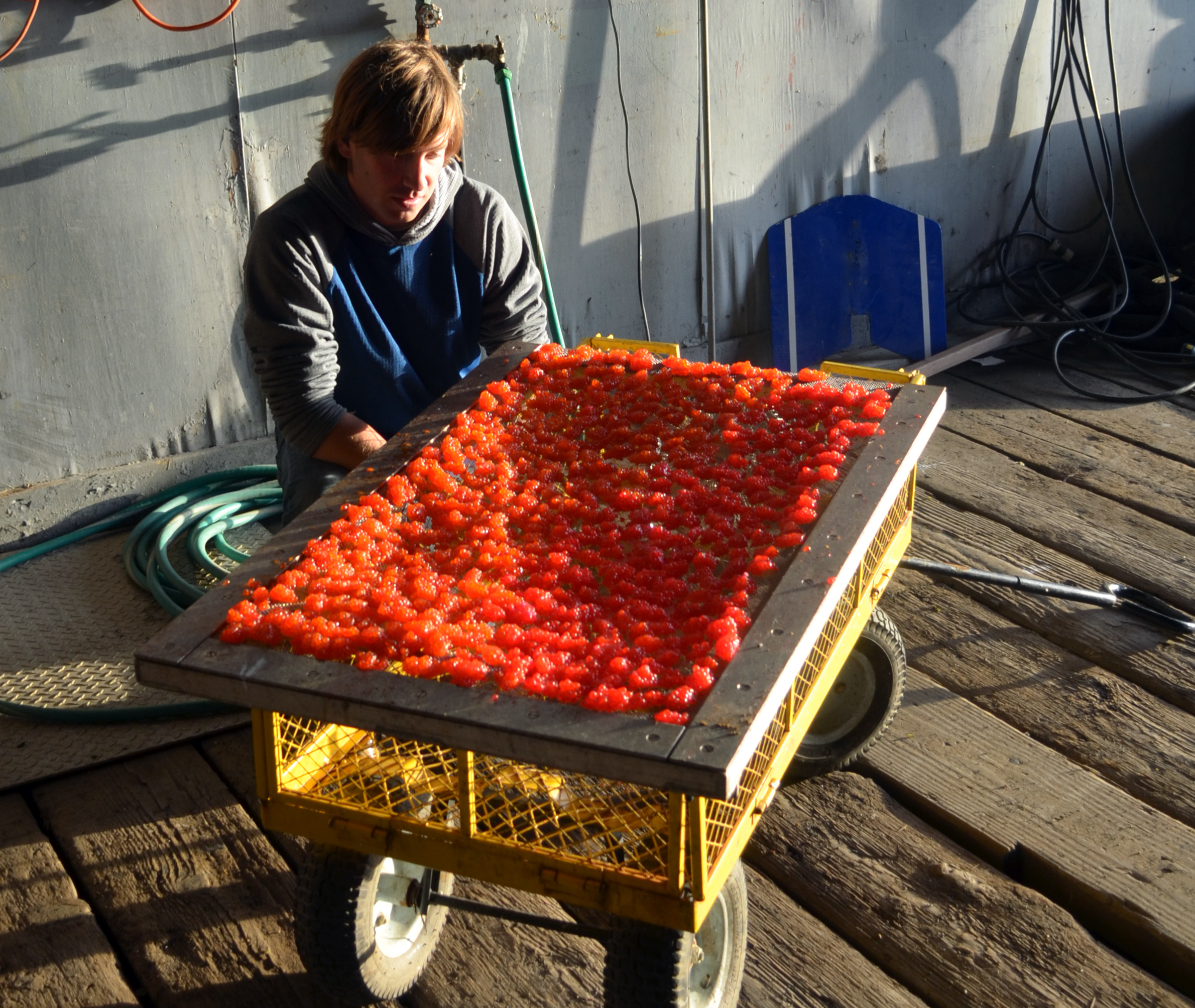
Final Thoughts
Although we have been putting up roe for decades, curing eggs is a very fickle process. There are so many variables that can impact the quality of the finished product including the age of the eggs, the temperature at the curing site, the egg cure recipe, the amount of cure, the intended use, the list goes on.
Even veteran fishing guides often find that there are batches that didn't quite turn out as planned. There are always new ideas, new experimental methods and ingredients. The trick is to be patient, be attentive, and follow the basic process closely. Aside from that, good luck and I hope this article helps you understand the process and puts you on the path toward success on the water!
How To Cure Salmon Roe For Sturgeon
Source: https://riptidefish.com/how-to-cure-salmon-eggs/
Posted by: browntherear68.blogspot.com

0 Response to "How To Cure Salmon Roe For Sturgeon"
Post a Comment